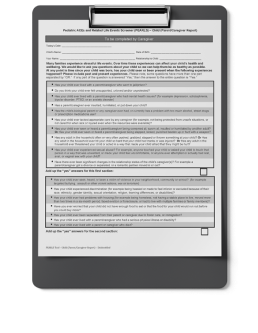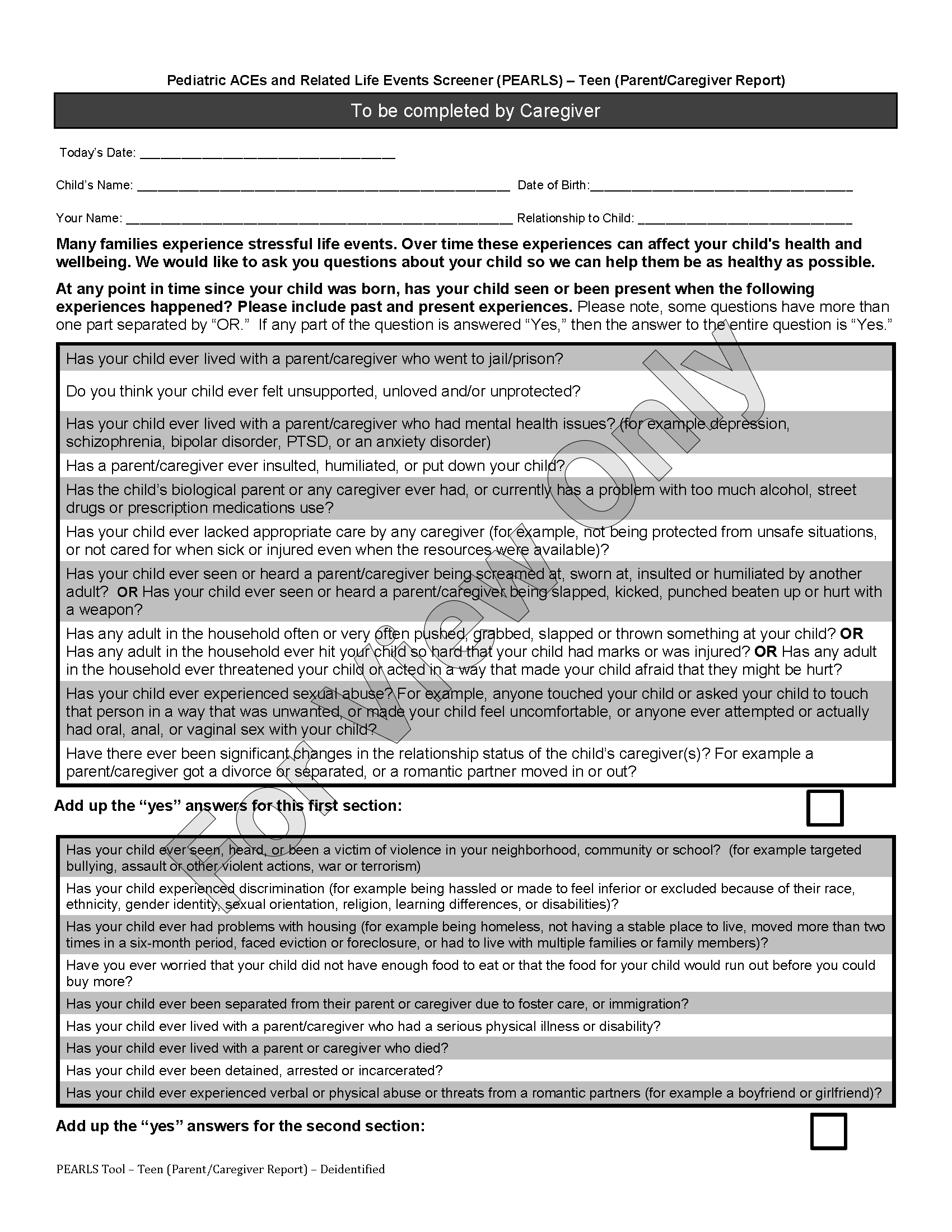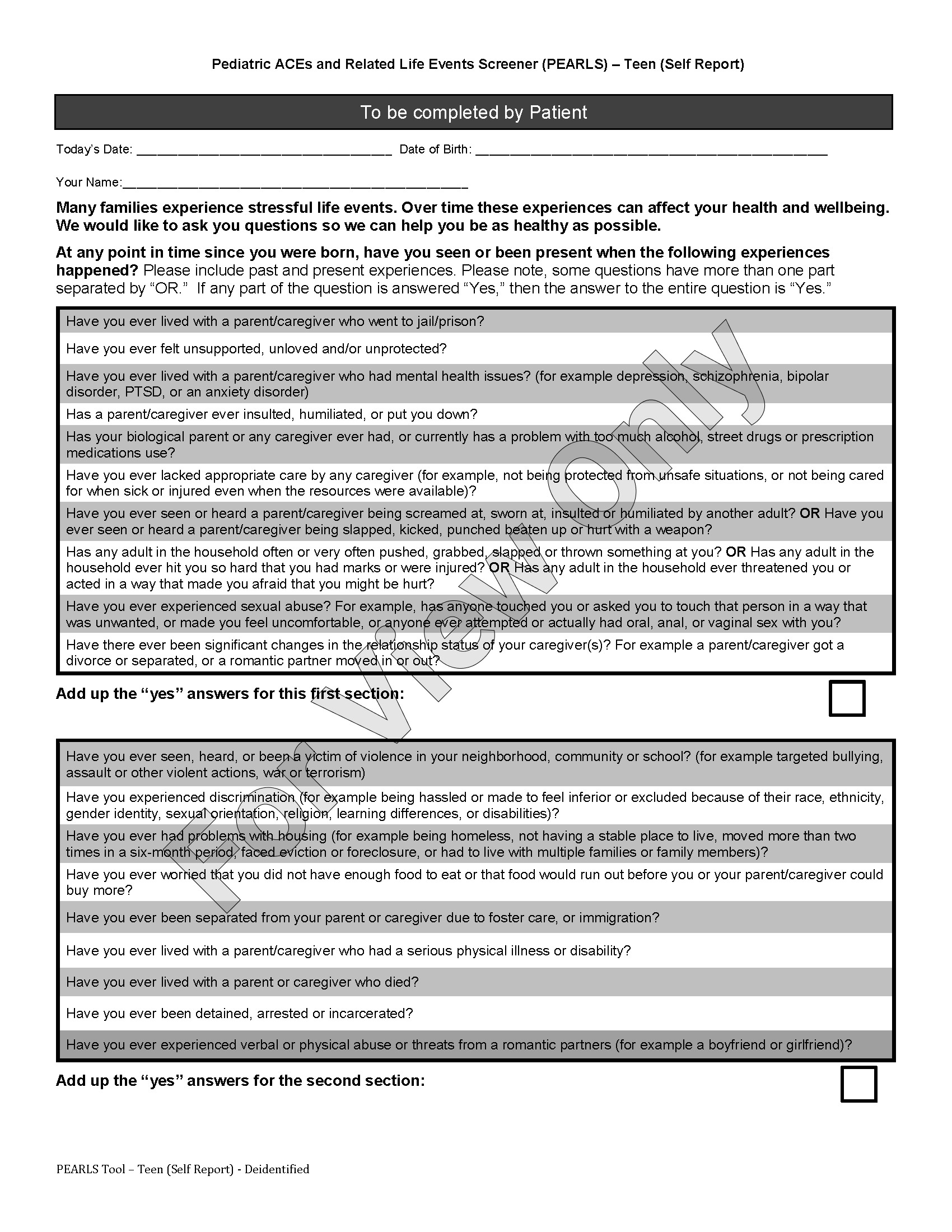The tool is designed to identify children and teens as early as possible who have experienced ACEs or other potentially traumatic events that may increase their risk for toxic stress and negative health outcomes. It is not intended to directly diagnose disease. It is one tool among several others to help inform a provider’s clinical assessment and judgment of each and every child’s current development, health, and well-being and future risk. The PEARLS should be used in concert with other child development and maternal depression screeners, in alignment with American Academy of Pediatrics Guidelines, and should never replace a full assessment of each patient, family and their unique biology and circumstances.
Administration
Routine and universal screening in pediatric primary care offers the opportunity to identify individuals at high risk of toxic stress and offer anticipatory guidance before the child becomes symptomatic. It is recommended that the PEARLS be presented to the parent/caregiver and/or teen at primary-care well child visits.
Periodicity schedule
In alignment with the Bright Futures recommended periodicity schedule for social determinants of health screening, the PEARLS tool should be administered at regular intervals starting in infancy. It is an ongoing assessment of experiences that research shows can occur at any point throughout childhood.
Implementation & Follow up
A clinic specific protocol guiding how the screening should be administered and how scoring leads to follow up care should be developed, including consideration of anticipatory guidance and education on ACEs, toxic stress and resilience, care coordination, follow up medical care, and connection to a comprehensive range of interventions (e.g., sleep, nutrition, mental and behavioral health, parenting support, physical exercise, and mindfulness) .







